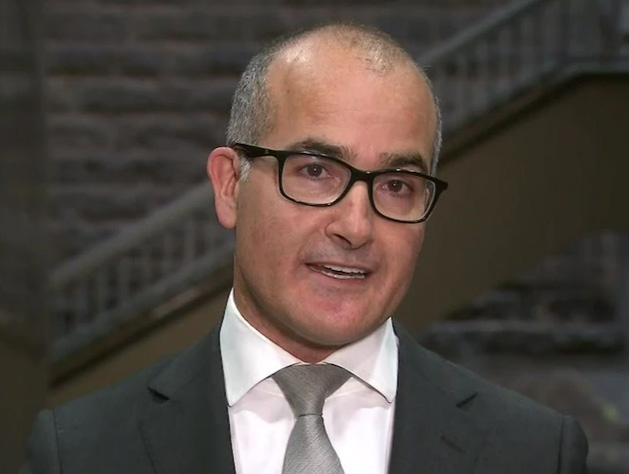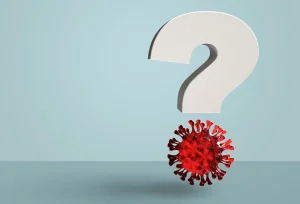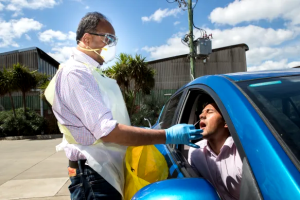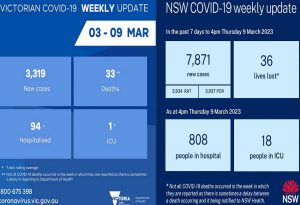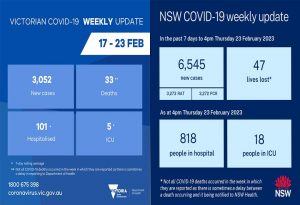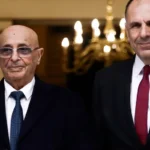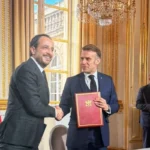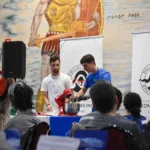Source: abcnews
Restrictions in Melbourne will be eased from Friday, with a 25-kilometre travel bubble to be introduced, while regional Victorians will have even greater freedoms.
It comes as Victoria recorded one new locally acquired COVID-19 case on Tuesday.
Victoria’s Health Minister Martin Foley said the case was directly linked to Stratton Finance at Port Melbourne, and the person had been quarantining during their infectious period.
The new case was detected among 28,485 test results on Tuesday, as 19,533 vaccination doses were administered at state-run hubs.
Eased restrictions to take effect from Friday
Across the state, masks will no longer be required outdoors, but must be worn indoors except in the home.
Otherwise, there are notable differences between Melbourne and the regions from 11:59pm on Thursday.
The following limits will apply in Melbourne:
- Outdoor gatherings increased to 10 people
- Visitors to homes still banned
- Students will return to the classroom from Friday
- Funerals limited to 50 people, weddings 10
- Religious ceremonies capped at 50 inside
- Offices can return with 25 per cent or a cap of 10, whichever is greater
- Restaurants and cafes can reopen with a max of 50 inside
- Retail can reopen with density limit of 1 person per 4 square metres
- Beauty services can resume for services where a mask can be worn
- Community sport can resume training
- Auctions can happen outdoors with max 50 people
The following limits will apply in regional Victoria:
- Visits to the home are allowed for two adults per day, plus their dependents
- Public gatherings increased to 20 people
- Restaurants and cafes can open for up to 150 per venue for seated service, with up to 75 allowed indoors
- Religious services capped at 150 for venue, with no more than 75 people allowed indoors
- Funerals limited to 75 people, weddings 20
- Offices remain capped at 50 per cent
- Community sport back for all ages for both training and competition
- Travel within regional Victoria remains permitted
Acting Premier James Merlino said the plan was to further ease restrictions again next Thursday night, on June 17, including ending the metro-region divide.
“This is a good day, everyone should be absolutely proud of what we’ve all achieved together,” he said.
“But we know that this isn’t over yet and until we have widespread vaccination across Victoria and across our country, the virus will still be with us.
“Subject to the public health advice, the epidemiological conditions through the next week, we expect next Thursday night, the regional-metro divisions will come down and we’ll be able to travel more freely around the state again.”
Among the other announcements today, there will be a further $8.3 million in business grants to help those sectors which are not yet allowed to reopen, including gyms, dance studios and amusement parks.
The government will also make QR check-in compulsory at all workplaces “with very limited exceptions”.
“Previously, it’s only been mandatory for customer-facing businesses, but through this outbreak we have seen a number of cases occur in office settings so we want to take the next step on this,” Mr Merlino said.
The mandatory workplace QR check-in is expected to be introduced from Thursday next week.
Victoria’s Chief Health Officer Brett Sutton said it was important to get back to zero cases.
“This started with one case in Wollert that has led to almost 100 cases over a period of a few weeks,” he said.
“So we absolutely have to drive back down to zero. That’s been the national strategy for a reason. It’s what allows our travel bubble, it’s what allows our internal borders to be open again.”
Lifting restrictions the right move, experts say
La Trobe University epidemiologist Hassan Vally said barring any surprises in daily case numbers, lifting restrictions was the right call.
“And unless there’s a spanner in the works, I think the health authorities should feel very confident about relaxing restrictions,” he said.
It’s the fourth lockdown for the state, and so the fourth time a path to eased restrictions is being plotted.
“The standard playbook is to relax restrictions in a very cautious way,” Dr Vally said.
After the five-day snap lockdown in February, schools reopened, workplaces returned to 50 per cent capacity and gathering caps were slightly lifted.
It took until a month later for the state to move to the fully “COVID-normal” settings.
Monash University’s Dr James Trauer said the “gamble” of incrementally opening up before community elimination paid off in 2020, and would likely pay off again.
“I think we’ll have to do what we did last time round, which is to maintain some restrictions for several weeks,” he said.
The chief executive of the Victorian Tourism Industry Council, Felicia Mariani, said the 25-kilometre travel bubble set to be imposed on Melburnians would be another blow to businesses in regional Victoria.
“For regional travel, 80 per cent of the visitation to our regional areas actually comes from people living in the Greater Melbourne area,” she told ABC Radio Melbourne.
“From a tourism point of view, when you shut down Greater Melbourne you really turn off the tap for the visitor economy in the whole state.”
Investigations continue into Delta outbreak
Health authorities have not yet determined how the Delta strain of the virus moved from a man in hotel quarantine into the community.
Genomic testing had traced the outbreak to a man who arrived in Melbourne from Sri Lanka in May, but Professor Sutton said no breaches of quarantine protocol had been identified.
“But something’s happened and we need to try and get to that as much as possible, not just to see if there are close contacts that we need to run down now, but for any lessons around finding those gaps and those tiny improvements that might be made into the future,” he said.
Responding to a question about the number of hotel quarantine breaches in Victoria, compared to other jurisdictions, Professor Sutton said hotel quarantine was “not a perfect system”.
“It is still probably the most powerful and positive public health intervention that Australia could have made back in March last year,” he said.
“It has gotten us to that state of community transmission that has made a world of difference on the global scale in terms of how we’ve managed to open up in Australia and how we’ve managed to protect so many Australians from long COVID, from dying.”
There are more than 1,100 primary close contacts linked to the West Melbourne cluster of cases, which involves the Delta variant.


